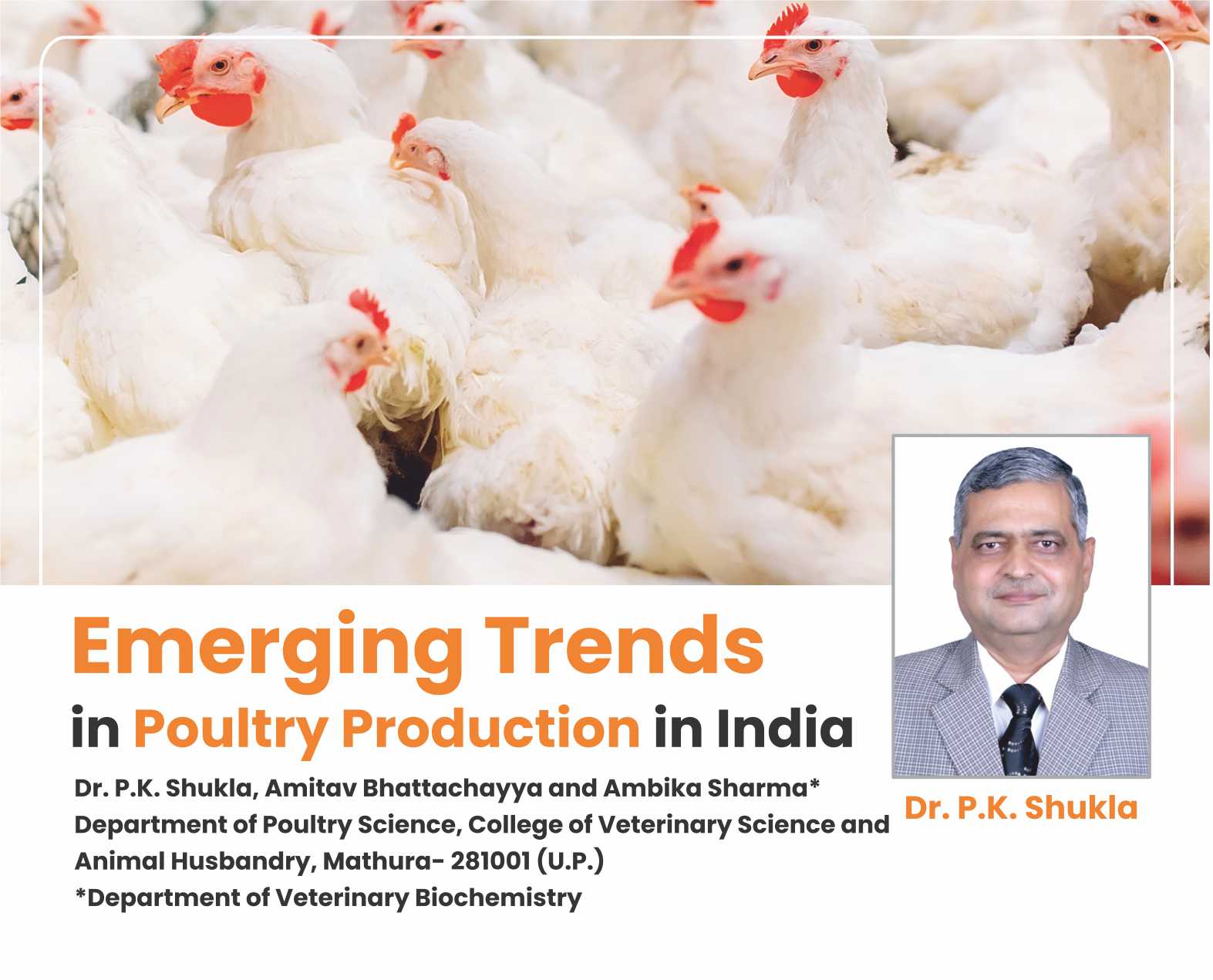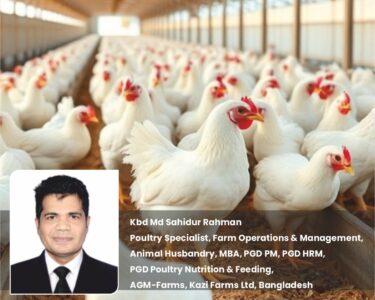Emerging Trends in Poultry Production in India
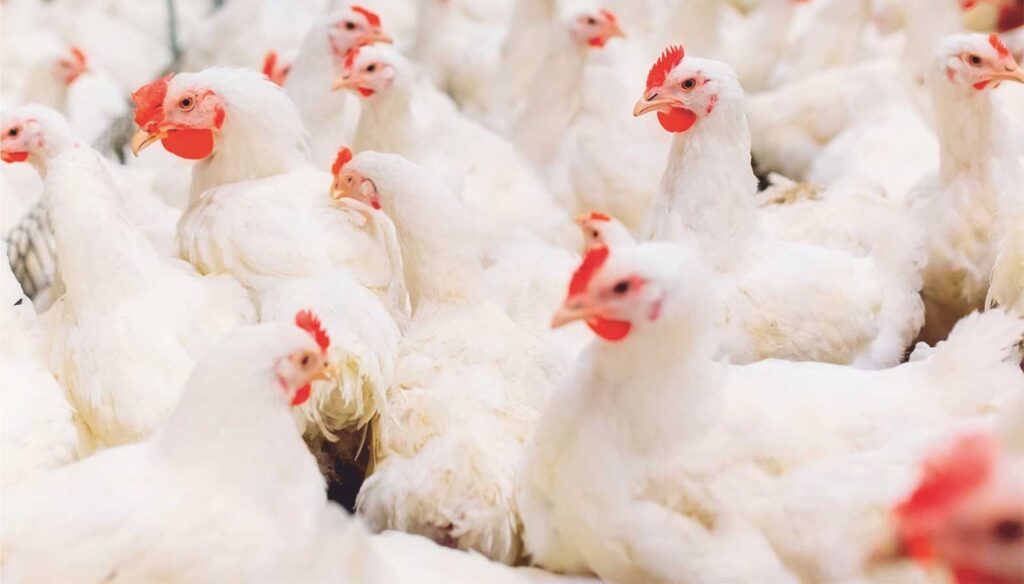

Dr. P.K. Shukla, Amitav Bhattachayya and Ambika Sharma*
Department of Poultry Science, College of Veterinary Science and
Animal Husbandry, Mathura- 281001 (U.P.)
*Department of Veterinary Biochemistry
Introduction:
The growth in India’s poultry industry is being driven by rising disposable incomes and changes in food habits. The shift from the traditional diet, which relied heavily on pulses, to animal-origin protein sources such as meat, eggs, and dairy products is significantly aiding the industry’s growth. The increasing awareness about health and wellness is further driving the demand for a protein-rich diet. Growth of the distribution channels is another factor giving a boost to the poultry industry.
The expansion in the food services market such as restaurants, fast food joints, and food chains, is leading to the rise in consumption of broiler meat and eggs. Both traditional Indian non-vegetarian recipes and fast-food recipes involve the use of broiler meats, as well as eggs, making them a significant part of the cooking. In addition, the growth of the bakery foods market is driving the demand for eggs, an important ingredient in making cakes and other bakery products.
According to the Department of Animal Husbandry and Dairying annual report (2022-23), poultry production in India has taken a quantum leap in the last few decades, emerging from conventional farming practices to commercial production systems with state-of-the-art technological interventions. Broiler meat production in the country is estimated at around 5 million tones (MT) annually, the sector currently witnessing an annual growth of 6–7% as per trade estimates.
1. Increased Demand for Poultry Products:
The demand for poultry products, including chicken meat and eggs, has been consistently growing in India due to factors such as population growth, urbanization, and changing dietary patterns with a preference for protein-rich foods.

The increased demand for poultry products in India is influenced by several factors, reflecting changes in consumer preferences, population dynamics, and economic development. Here are some key reasons contributing to the rising demand for poultry products in India-
Population Growth: India has a rapidly growing population, and as more people join the middle class, dietary patterns tend to shift towards protein-rich foods. Poultry, being a relatively affordable and accessible source of protein, has seen increased consumption.
Urbanization and Changing Lifestyles: Urbanization is accompanied by changes in lifestyle and dietary habits. Urban consumers often have busier lifestyles and seek convenient and quick-to-cook protein sources, making poultry products an attractive option.
Health Consciousness: As awareness about health and nutrition increases, many consumers are choosing poultry products as a lean source of protein. Chicken, in particular, is often considered a healthier option compared to red meat.
Affordability: Poultry products, especially chicken, are generally more affordable compared to some other meat sources. This affordability makes them accessible to a larger section of the population.
Versatility in Culinary Applications: Poultry products, such as chicken and eggs, are versatile and can be used in various culinary applications. This versatility makes them popular in a wide range of cuisines and dishes.
Economic Development: With improving economic conditions, more consumers have the purchasing power to include a variety of protein sources in their diets. This has led to an increase in the consumption of poultry products.
Government Support: Government initiatives and policies supporting the poultry sector have played a role in fostering its growth. This includes financial support, subsidies, and infrastructure development to boost poultry production.
Rising Awareness of Protein Deficiency: Protein deficiency is a significant concern in India, and there is increasing awareness of the importance of protein in the diet. Poultry products, being rich in high-quality protein, are sought after as a solution to address nutritional gaps.
Disease Concerns with Other Meat Sources: Concerns related to diseases associated with certain types of meat, such as avian influenza in poultry or other zoonotic diseases, may lead consumers to opt for poultry products perceived as safer.
Innovation and Product Development: The industry has responded to consumer demand by innovating and developing new products, including processed and value-added poultry items. This has expanded the range of poultry products available in the market.
The combination of these factors has contributed to the sustained growth in the demand for poultry products in India. It’s important to note that these trends may continue to evolve based on demographic shifts, economic developments, and changing consumer preferences.
2. Modernization and Technological Adoption:
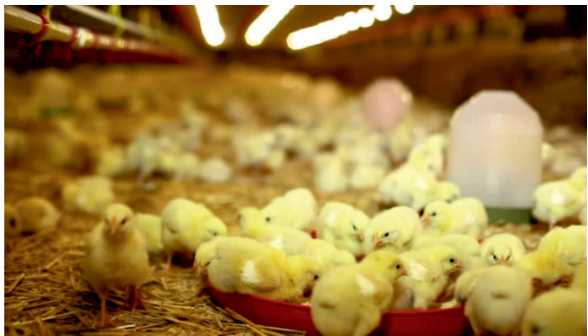
There has been a trend towards modernization in poultry farming practices, with the adoption of advanced technologies. This includes automated feeding systems, climate control in poultry houses, and the use of data analytics for better management practices.
Modernization and technological adoption in poultry production in India have become increasingly prominent as the industry seeks to enhance efficiency, productivity, and sustainability. Several key areas reflect the ongoing modernization efforts in the Indian poultry sector.
Automated Farm Management Systems: Poultry farms are adopting automated systems for managing various aspects of production. This includes automated feeding systems, which can precisely control the quantity and timing of feed distribution, optimizing the nutrition of the flock. Automated watering systems are also employed for efficient water management.
Climate-Controlled Poultry Houses: To ensure optimal conditions for bird growth and health, modern poultry farms are equipped with climate control systems. These systems regulate temperature, humidity, and ventilation, creating an environment that maximizes bird comfort and productivity.
Data Analytics and Precision Farming: The integration of data analytics and precision farming technologies is gaining traction. Farmers are using sensors to collect data on various parameters such as temperature, humidity, and bird behavior. Analyzing this data allows for better decision-making, early disease detection, and optimization of production processes.
Genetic Improvement and Breeding Technologies: Poultry genetics play a crucial role in productivity. Modern poultry production in India involves the use of advanced breeding technologies to develop strains of birds that exhibit desirable traits such as faster growth, improved feed conversion efficiency, and disease resistance.
Vaccination Technology: Vaccination is a critical aspect of poultry health management. Automated vaccination systems are increasingly being used to ensure accurate and timely administration of vaccines. This not only improves disease prevention but also reduces stress on the birds.
Waste Management and Environmental Controls: Modern poultry farms focus on sustainable practices, including efficient waste management. Technologies such as anaerobic digestion systems are employed to convert poultry waste into biogas or organic fertilizers. This helps in minimizing the environmental impact of poultry farming.
Digital Platforms for Monitoring and Management: Farmers are using digital platforms and mobile applications to monitor and manage their poultry farms remotely. These platforms provide real-time data on various parameters, allowing farmers to make informed decisions even when they are not physically present on the farm.
Innovations in Feed Technology: Feed represents a significant cost in poultry production. Innovations in feed technology, including the use of alternative ingredients, precision feeding, and the development of nutritionally optimized feeds, contribute to improved feed efficiency and cost-effectiveness.
Biosecurity Measures: To prevent and control disease outbreaks, modern poultry farms implement robust biosecurity measures. This includes the use of technologies such as foot baths, sanitization gates, and controlled access systems to minimize the risk of disease introduction.
Robotics and Automation in Processing Plants: In addition to on-farm technologies, there is a trend towards the adoption of robotics and automation in poultry processing plants. Automated processing lines improve efficiency, reduce labor requirements, and enhance food safety.
These modernization trends are driven by the need to meet the growing demand for poultry products, improve the overall efficiency of production, and address challenges such as disease management and environmental sustainability. Continued technological advancements are expected to shape the future of poultry production in India, making it more sustainable, efficient, and economically viable.
3. Biosecurity Measures:
With the increasing concern about diseases, especially avian influenza, there has been a focus on implementing stringent biosecurity measures in poultry farms to prevent disease outbreaks. This includes measures to control the entry of pathogens into farms and strict hygiene practices.
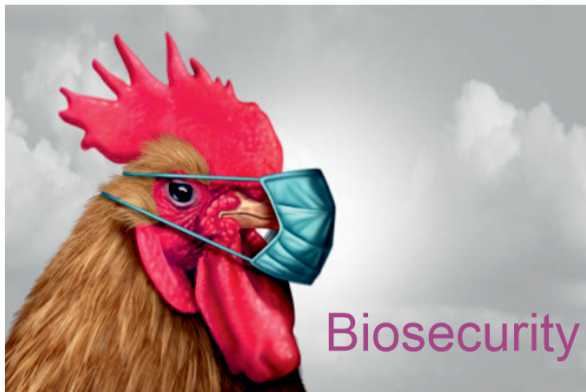
Biosecurity measures are critical in poultry production to prevent the introduction and spread of diseases. Implementing effective biosecurity measures helps protect the health of the poultry flock, reduces the risk of disease outbreaks, and ensures the overall sustainability of the poultry industry. Here are key biosecurity measures commonly employed in poultry production in India-
Restricted Access: Limiting access to poultry farms is a fundamental biosecurity measure. Entry should be restricted to essential personnel only, and visitors should follow strict protocols, including wearing protective clothing and footwear.
Footbaths and Disinfection: Installing footbaths at entry points helps prevent the introduction of pathogens into the farm. Personnel and visitors are required to disinfect their footwear before entering the premises. Proper disinfection protocols are crucial to minimize the risk of disease transmission.
Quarantine Procedures: New birds entering the farm should undergo a quarantine period to monitor their health and detect any potential diseases. During this period, they are kept separate from the existing flock to prevent disease spread.
Isolation of Sick Birds: If a bird is found to be sick, it should be immediately isolated from the healthy flock. This prevents the spread of diseases within the flock. Proper veterinary care should be provided to the isolated bird.
Vehicle Disinfection: Vehicles entering and leaving the farm, including those transporting feed, should be properly disinfected. This prevents the potential contamination of the farm by external sources.
Biosecurity Signage and Education: Clear signage should be displayed to remind personnel and visitors of biosecurity protocols. Regular training and education programs for farm workers regarding biosecurity practices are essential.
Clean and Sanitized Equipment: All equipment, including feeders, waterers, and tools, should be regularly cleaned and sanitized. This prevents the buildup and spread of pathogens through contaminated equipment.
Rodent and Pest Control: Implementing measures for controlling rodents and pests is essential for biosecurity. These animals can carry diseases and pose a risk to the health of the poultry flock.
Proper Manure Management: Proper disposal and management of poultry litter and manure are essential to prevent the buildup of pathogens. Adequate ventilation in poultry houses helps in reducing the risk of respiratory diseases.
Water Quality Management: Ensuring the quality of drinking water is crucial for maintaining bird health. Regular testing of water sources and proper sanitation of water delivery systems help prevent waterborne diseases.
Culling and Disposal Protocols: In the event of a disease outbreak, culling and proper disposal of affected birds are critical. This prevents the further spread of the disease and protects the remaining flock.
Record-Keeping: Maintaining detailed records of the health status of the flock, vaccinations, and any disease incidents is important. This information can be valuable for disease monitoring, traceability, and future management decisions.
Vaccination Programs: Implementing a well-designed and timely vaccination program is essential for disease prevention. This includes vaccinations against common poultry diseases prevalent in the region.
Monitoring and Surveillance: Regular monitoring and surveillance of the flock’s health, as well as collaboration with veterinary authorities, help in early detection of diseases and timely intervention.
These biosecurity measures, when implemented comprehensively and consistently, contribute to the overall health and productivity of poultry flocks in India and help maintain a sustainable and disease-resistant industry.
4. Vertical Integration:
Many poultry producers have been adopting a vertical integration model, where a single company controls multiple stages of the production process, from breeding and hatching to processing and distribution. This integration is aimed at achieving better control over quality and cost efficiency.
Vertical integration in poultry production involves the ownership and control of multiple stages of the poultry supply chain by a single entity. In India, as in many other countries, vertical integration in the poultry industry has become a prevalent business model. Here are key aspects of vertical integration in poultry production in India-
Breeding and Hatcheries: Vertical integration often starts with control over the breeding and hatchery operations. Integrated companies own and manage breeding farms that produce parent stock. These breeding farms are responsible for producing fertile eggs, which are then sent to hatcheries.
Hatcheries: Integrated poultry companies often have their own hatcheries where fertilized eggs are incubated and hatched. This control over the hatchery phase allows for consistent quality and the selection of traits that contribute to the desired characteristics in the birds.
Broiler Farms: Integrated companies typically own or contract broiler farms where day-old chicks are raised to market weight. By controlling the production of broilers, companies can optimize feed efficiency, monitor health, and ensure the implementation of biosecurity measures.
Feed Production: Many vertically integrated poultry companies in India also control the production of feed. This involves the sourcing and processing of raw materials to produce nutritionally balanced feed for the birds. Integrated control over feed production ensures quality and cost efficiency.
Processing Plants: Integrated companies often own or have ties with processing plants where the broilers are slaughtered, processed, and packaged. This allows for control over the quality of the end product and ensures compliance with safety and hygiene standards.
Distribution and Marketing: Some vertically integrated poultry companies have their own distribution networks and marketing channels. This control over distribution ensures efficient delivery of poultry products to various markets, including retailers and food service establishments.
Retail Presence: In some cases, vertically integrated poultry companies may have their own retail outlets, providing direct access to consumers. This vertical integration strategy allows for greater control over the final stages of the supply chain and can enhance brand visibility.
Waste Management: Integrated companies often manage the waste generated at various stages of production. This includes the responsible disposal or utilization of poultry litter and other by-products.
Advantages of Vertical Integration-
Cost Efficiency: Integration can lead to cost savings by optimizing processes, reducing transportation costs, and improving overall efficiency.
Quality Control: Vertical integration allows for greater control over the entire production process, ensuring consistent quality from breeding to processing.
Risk Management: By controlling multiple stages of the supply chain, companies may be better positioned to manage risks such as disease outbreaks or fluctuations in input prices.
Streamlined Communication: Communication and coordination are often streamlined within an integrated structure, allowing for faster decision-making and response to market changes.
Challenges of Vertical Integration-
Capital Intensive: Establishing and maintaining a vertically integrated poultry operation can be capital-intensive.
Market Dependency: Companies may become heavily dependent on their integrated model, which could pose challenges if market conditions change.
Complex Management: Managing multiple stages of the supply chain requires specialized expertise, and companies need effective management systems in place.
Vertical integration in poultry production is a strategy that has been adopted by various players in the industry in India to achieve greater control, efficiency, and consistency in their operations. The extent of integration varies among companies, and not all poultry producers in India follow this model.
5. Government Initiatives and Policies:
The Indian government has implemented various initiatives and policies to support the poultry sector. This includes financial support, training programs, and policies to address challenges such as disease control and market access.
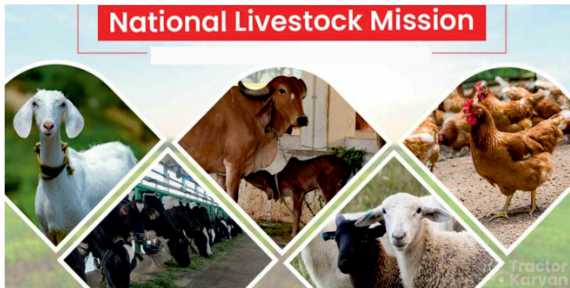
National Livestock Mission (NLM): The National Livestock Mission is an initiative of the Government of India aimed at sustainable development of the livestock sector, including poultry. It focuses on breed improvement, feed and fodder development, and other components to enhance productivity.
National Poultry Development Scheme (NPDS): The NPDS is a centrally sponsored scheme that aims to promote the overall development of the poultry sector. It includes components related to breed improvement, disease control, and infrastructure development.
Rashtriya Krishi Vikas Yojana (RKVY): The RKVY is an umbrella scheme that supports the development of agriculture and allied sectors, including poultry farming. It provides financial assistance for various activities such as infrastructure development, capacity building, and technology adoption.
Poultry Venture Capital Fund (PVCF): The PVCF is a financial assistance program that provides capital to entrepreneurs for setting up commercial poultry ventures. It aims to encourage private sector participation in the poultry industry.
Support to State Poultry Farms (under NPDS): The government supports state poultry farms for the production of quality breeding stock and day-old chicks. This contributes to the improvement of poultry genetics and productivity.
Biosecurity Measures for Avian Influenza: In response to outbreaks of avian influenza, the government has implemented various measures to control the spread of the disease. These measures include culling of infected birds, compensation for farmers, and awareness programs.
It’s important to note that policies and initiatives can change, and new programs may be introduced.
6. Challenges and Opportunities:
The sector faces challenges such as disease outbreaks, fluctuations in feed prices, and issues related to environmental sustainability. However, there are also opportunities for growth, especially with the rising demand for high-quality poultry products.
The poultry production sector in India faces a combination of challenges and opportunities. Understanding these factors is essential for policymakers, industry stakeholders, and farmers. Here’s an overview-
Challenges-
Disease Outbreaks: The poultry industry is vulnerable to disease outbreaks, such as avian influenza. These outbreaks can result in significant economic losses, culling of birds, and disruptions in the supply chain.
Biosecurity Concerns: Maintaining effective biosecurity measures is a challenge, especially with the risk of diseases spreading from wild birds and other sources. Ensuring strict biosecurity protocols is critical to prevent disease transmission.
Feed Costs: Feed constitutes a significant portion of the overall production cost. Fluctuations in feed prices can impact the profitability of poultry farming, and dependency on imported raw materials can add to cost variability.
High Competition and Price Volatility: The poultry sector in India is competitive, and price volatility can affect both producers and consumers. Market dynamics, including sudden price drops, can pose challenges for poultry farmers.
Infrastructure and Technology Adoption: In some regions, lack of modern infrastructure and slow adoption of advanced technologies can hinder the growth and efficiency of the poultry industry.
Environmental Concerns: The poultry sector generates waste, and improper disposal can lead to environmental issues. Managing poultry litter and waste responsibly is a challenge.
Lack of Skilled Labor: There can be a shortage of skilled labor, particularly in areas related to the operation and maintenance of modern poultry farming equipment and technology.
Government Regulations: While government support is available, complex regulations and bureaucratic hurdles can create challenges for farmers and businesses.
Opportunities-
Rising Demand: There is a growing demand for poultry products in India due to population growth, urbanization, and increased awareness of the nutritional benefits of poultry.
Health Conscious Consumers: A trend towards healthier eating habits is creating opportunities for specialty and organic poultry products. Consumers are increasingly willing to pay a premium for products perceived as healthier and ethically produced.
Technological Advancements: The adoption of advanced technologies, such as precision farming, data analytics, and automation, presents opportunities to enhance productivity and efficiency in poultry farming.
Government Support: Various government initiatives and schemes support the poultry sector, offering financial assistance, subsidies, and infrastructure development programs.
Vertical Integration: Vertical integration allows for better control over the entire poultry supply chain, offering opportunities for improved efficiency, cost reduction, and quality control.
Export Potential: With improved biosecurity measures and adherence to international quality standards, there is an opportunity for Indian poultry products to tap into the global market.
Diversification of Products: Beyond traditional chicken and eggs, there is potential for diversification into value-added products such as processed meats, organic poultry, and specialty breeds.
Research and Development: Ongoing research and development efforts can lead to the development of disease-resistant breeds, improved feed formulations, and more efficient production practices.
Increased Awareness of Animal Welfare: Consumers are becoming more conscious of animal welfare issues, creating an opportunity for producers who adhere to high standards of animal care.
Entrepreneurship: The poultry sector provides opportunities for entrepreneurship, especially for small and medium-sized farmers who can explore niche markets and value-added products.
Balancing the challenges and opportunities requires a collaborative effort from the government, industry players, and farmers to address issues, adopt best practices, and seize opportunities for sustainable growth in the poultry production sector in India.


